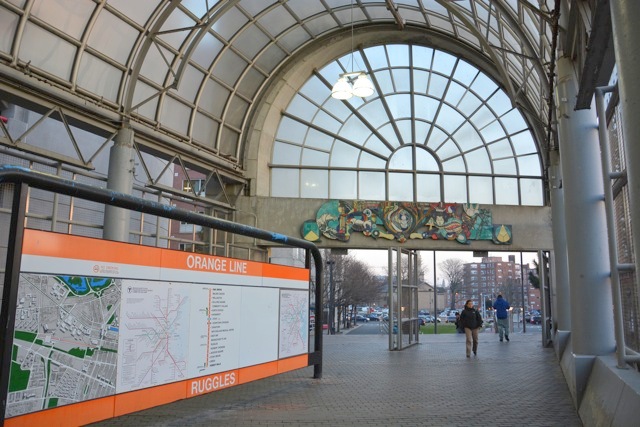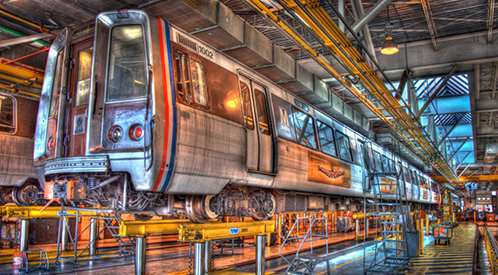Overview
This program (49 U.S.C. 5310) provides formula funding to states and designated recipients to meet the transportation needs of older adults and people with disabilities when the transportation service provided is unavailable, insufficient, or inappropriate to meeting these needs. Funds are apportioned based on each state’s share of the population for these two groups. Formula funds are apportioned to direct recipients; for rural and small urban areas, this is the state Department of Transportation, while in large urban areas, a designated recipient is chosen by the governor. Direct recipients have flexibility in how they select subrecipient projects for funding, but their decision process must be clearly noted in a state/program management plan. The selection process may be formula-based, competitive or discretionary, and subrecipients can include states or local government authorities, private non-profit organizations, and/or operators of public transportation.
The program aims to improve mobility for older adults and people with disabilities by removing barriers to transportation service and expanding transportation mobility options. This program supports transportation services planned, designed, and carried out to meet the transportation needs of older adults and people with disabilities in all areas – large urbanized (over 200,000), small urbanized (50,000-200,000), and rural (under 50,000). The funding can be used for “traditional” or “nontraditional” projects. “Traditional” projects are capital projects as defined in 49 U.S.C. 5302(3). “Nontraditional” projects are capital and/or operating projects that go beyond the scope of the Americans with Disabilities Act (ADA) complementary paratransit services or public transportation alternatives designed to assist older adults and people with disabilities.
To continue streamlining processes and providing high-quality customer service, FTA updated program guidance and award management requirements to incorporate provisions from the Fixing America's Surface Transportation (FAST) Act, the Infrastructure Investment and Jobs Act, the Uniform Administrative Requirements for Federal awards to non-Federal entities, and current FTA policies and procedures.
The Enhanced Mobility for Seniors and Individuals with Disabilities Program Guidance, C 9070.1H provides instructions and guidance on program administration and the grant application process for the Enhanced Mobility of Seniors and Individuals with Disabilities Program.
Eligible Recipients
States, local government authorities, and designated recipients are direct recipients; Eligible subrecipients include private nonprofit organizations, states or local government authorities, and operators of public transportation. Operators of public transportation are entities that provide regular continuing shared-ride surface transportation services that are open to the general public or open to a segment of the general public defined by age, disability, or low-income. Operators of public transportation are eligible as subrecipients for nontraditional Section 5310 projects.
Eligible subrecipients should apply to the direct recipient in their area for funding. In small urban or rural areas, the direct recipient is the state department of transportation. In large urban areas the direct recipient is the designated recipient.
A federally recognized Indian tribe may apply directly to FTA for Section 5310 funds that a state, local government authority, or designated recipient has awarded to the tribe. Tribes are eligible direct recipients under the Section 5311 program.
Eligible Activities
Traditional Section 5310 project examples include:
- Buses and vans
- Wheelchair lifts, ramps, and securement devices
- Transit-related information technology systems, including scheduling/routing/one-call systems
- Mobility management programs
- Non-emergency medical transportation
- Acquisition of transportation services under a contract, lease, or other arrangement
Nontraditional Section 5310 project examples include:
- Travel training
- Volunteer driver programs
- Construction of an accessible path to a bus stop, including curb-cuts, sidewalks, accessible pedestrian signals or other accessible features
- Improvements to signage, or way-finding technology
- Incremental cost of providing same day service or door-to-door service
- Purchase of vehicles to support new accessible taxi, rides sharing and/or vanpooling programs
- Mobility management programs
- Non-emergency medical transportation
Statutory References
49 U.S.C. Section 5310
Funding Availability
Section 5310 funds are available to the states and designated recipients during the fiscal year of apportionment plus two additional years (total of three years).
Allocation of Funding
Section 5310 funds are apportioned among the states and designated recipients by a formula which is based on the number of older adults and people with disabilities in each state according to the latest available U.S. Census data.
Match
The federal share of eligible capital costs may not exceed 80 percent, and 50 percent for operating assistance. The 10 percent that is eligible to fund program administrative costs including administration, planning, and technical assistance may be funded at 100-percent federal share.
Federal funds from other agencies may be used as match for the Section 5310 Program. For additional information on local match and federal fund braiding refer to the Section 5310 Circular (9070.1G) and the CCAM Federal Fund Braiding Guide.
Coordination with Federal Programs
FTA’s Section 5310 program allows grantees to coordinate and assist in regularly providing meal delivery service for homebound individuals if the delivery service does not conflict with providing public transportation service or reduce service to public transportation passengers. Learn more about the Coordinating Council on Access and Mobility (CCAM).
In March 2022, FTA posted guidance clarifying coordination on human services transportation on a new transportation coordination webpage. Coordinated transportation involves multiple entities working together to deliver one or more components of a transportation service to increase capacity. The transportation coordination guidance aims to reduce overlap between the 130 CCAM programs across nine agencies that may fund human services transportation and incentivize collaboration by clarifying eligible reporting into the National Transit Database (NTD). This new guidance addresses the following topics as they relate to NTD reporting: definition of public transportation; paratransit; charter service; incidental use of transit assets; and trip brokering.
National Aging and Disability Transportation Center (NADTC)
The National Aging and Disability Transportation Center (NADTC) is a national technical assistance center funded by FTA with guidance from the Department of Health and Human Services’ Administration for Community Living (ACL). NADTC promotes the availability and accessibility of transportation options that serve the needs of people with disabilities, older adults, caregivers, and communities with a focus on the Enhanced Mobility of Seniors & Individuals with Disabilities Section 5310 program and other transit investments. The NADTC supports the delivery of effective, efficient, high-quality, and coordinated specialized transportation services that maximize federal investments.
Transportation Technical Assistance Coordination Library (TACL)
The Transportation Technical Assistance Coordination Library (TACL) provides a sustainable methodology and platform to access resources across a diverse range of transportation technical assistance centers and FTA. Participating FTA-funded technical assistance centers include:
For additional technical assistance resources, visit Coordination-Related Technical Assistance Centers.
Grant Authorization:
BIL


